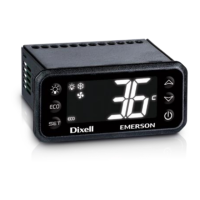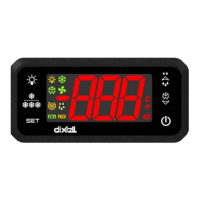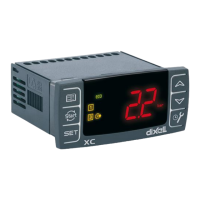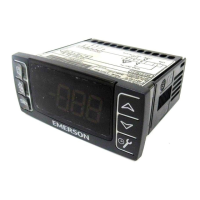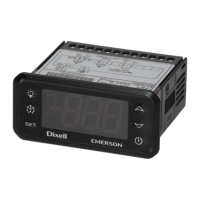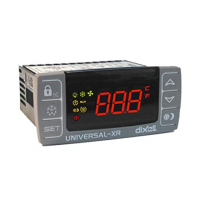Safety
Information
Product
information
Mechanical
installation
Electrical
installation
Getting
started
Basic
parameters
Running the
motor
Optimization
EtherCAT
interface
SMARTCARD
Operation
Onboard
PLC
Advanced
parameters
Technical
Data
Diagnostics
UL listing
information
Digitax ST User Guide 83
Issue: 5
Table 9-49 CoE state machine transition and events
When the EtherCAT interface transitions from the EtherCAT Safe-operational state to the EtherCAT Operational state, a number of drive parameters
are set to allow the CoE profiles to control the drive and motor. These parameters are set in the following order:
•Pr 6.42 to 0
•Pr 6.43 to On (1)
•Pr 3.22 to 0 (where present)
•Pr 3.23 to On (1) (where present)
•Pr 3.13 to OFF (0) (In open-loop operating modes)
•Pr 2.10 to 1
•Pr 2.20 to 1
•Pr 2.02 to On (1)
•Pr 1.04 to 0
•Pr 1.21 to 0
•Pr 1.38 to 0
•Pr 1.08 to OFF (0)
•Pr 1.10 to On (1)
•Pr 1.09 to OFF (0)
•Pr 1.15 to 1
•Pr 1.14 to 3
These values are set once and not continuously forced. They are not reset when leaving the Operational state. In addition, the option starts to write
parameters implicitly mapped by the CoE profiles, when moving to the Operational state.
Transition Event(s) Action(s)
0 Automatic transition after power-on or reset application Drive device self-test and/or self Initialization shall be performed
1 Automatic transition Communication shall be activated
2 Shutdown command from control device or local signal None
3 Switch on command received from control device or local signal Power section shall be switched on if not already switched on
4
Enable operation command received from control device or
local signal
Drive function shall be enabled and clear all internal set-points
5
Disable operation command received from control device or
local signal
Drive function shall be disabled
6 Shutdown command received from control device or local signal
The high-power shall be switched off immediately, and the motor
shall be free to rotate if not braked; additional action depends on
the shutdown option code
7
Quick stop or disable voltage command from control device or
local signal
None
8 Shutdown command from control device or local signal
The high-power shall be switched off immediately if possible,
and the motor shall be free to rotate if not braked
9 Disable voltage command from control device or local signal
The high-power shall be switched off immediately if possible,
and the motor shall be free to rotate if not braked
10
Disable voltage or quick stop command from control device or
local signal
The high-power shall be switched off immediately if possible,
and the motor shall be free to rotate if not braked
11 Quick stop command from control device or local signal The quick stop function shall be started
12
Automatic transition when the quick stop function is completed
and quick stop option code 1, 2, 3 or 4 disable voltage command
received from control device (dependant on the quick stop
option code)
The power section shall be switched off
13 Fault signal The configure fault reaction function shall be executed
14 Automatic transition
The drive function shall be disabled; the high-power may be
switched off
15 Fault reset command from control device or local signal
A reset of the fault condition is carried out, if no fault exists
currently on the drive device; after leaving the Fault state, the
Fault reset bit in the controlword shall be cleared by the control
device
16
Enable operation command from control device, if the quick stop
option code is 5, 6, 7 or 8
The drive function shall be enabled

